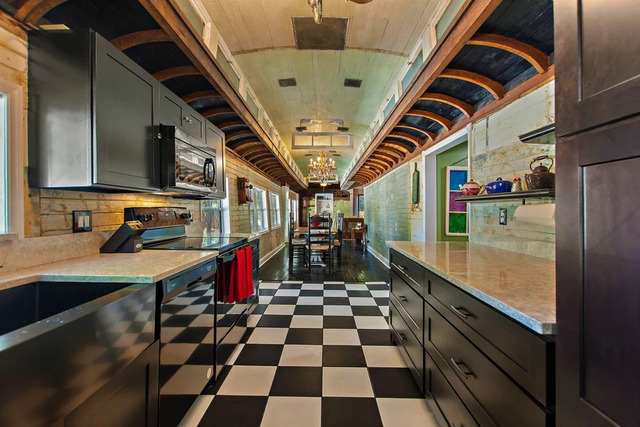ADDISON BLOCKHOUSE HISTORIC STATE PARK
This property is maintained for cultural preservation and is not open to the public.
Effective July 2, 2020 Addison Blockhouse Historic State Park is maintained for cultural preservation. Contact Tomoka State Park, 386-676-4050 for more information. All other parts of the park are closed.
The Addison Blockhouse, a small picturesque coquina rock ruin, is located on what was once an 18th-century plantation built by John Moultrie. Later, John Addison, then Duncan McRae, owned and worked the land growing cotton and sugar cane from 1816 to 1836 until it was burned in the Second Seminole War.
Although the blockhouse originally served as an outside kitchen for Moultrie's overseer's house, the Carolina Regiment of Volunteers fortified the abandoned kitchen building for defense against further Seminole attacks.
The blockhouse ruin is roofless, with one small round tower on one corner. Inside the blockhouse is a large fireplace. The walls of the building rise about six feet and the tops of the walls have an embattled appearance with an embankment and moat. Although the kitchen foundation is from the 18th century, the upper part of the blockhouse was added in the 1920s. The site also contains the adjacent foundation and walls of a sugar mill constructed by Duncan McRae in 1832.
Over the years, the lands ultimately making up Addison Blockhouse was owned, sold and split among a variety of planters.
In 1777, John Moultrie completed a plantation in the Tomoka uplands. The house was described as wood framed with a stone chimney, a piazza and two small wings. The kitchen of the house later became the Addison Blockhouse. The house was abandoned in 1783.
1769 map of plantations in Ormond Beach - John Moultrie's Plantation 2,000 acres near upper right corner.
1769 map of plantations in Volusia County - John Moultrie's Plantation 2,000 acres near upper right corner.
John Addison first acquired the land now known as the Addison Blockhouse Historic State Park in 1807 from John Moultrie and named the cotton plantation Carrickfergus after his birthplace in Ireland.
An 1816 map held in the State Library and Archives of Florida shows that the plantation covered 1,414 acres from the west bank of the Tomoka River to Kings Road. Addison grew cotton and other field crops in the area, which is shown as cleared land on the 1816 map. The labor for clearing, planting, picking and ginning cotton was provided by 67 enslaved workers.
John Addison died in 1825 and was buried on his plantation by his brother, Thomas Addison.
The plantation was sold two years later to Duncan and Kenneth McCrae. The McCraes built a plantation and large steam-powered sugar mill in 1832 that operated for four years until 1836. The McCraes abandoned their plantation after sugar production plummeted and the Seminoles approached.
Sketch of moat around Addison Blockhouse
Illustration of moat that was built around Addison Blockhouse
On February 27, 1836, returning troops began construction of the blockhouse around a kitchen foundation. A moat was dug and an 18-foot-high palisade wall surrounded the fort. The palisade was made from pine tree logs, split and driven into the ground. The ends of the logs were sharpened, holes were cut for firearms and a bench was installed inside all the way around.
On March 10, 1836, Seminole warriors King Philip and Wildcat led a raid on Carrickfergus, destroying the sugar mill and other plantation buildings. The Seminoles attacked soldiers who were patrolling between the mill and the fort. Three soldiers were killed, and the troops then abandoned the area.
After the Seminole raids, the plantation was abandoned and the Addison gravesite disappeared until 1911 when the Daytona Gazette-News reported that an unknown grave had been found in the woods along the Tomoka River. The identity of the grave was later revealed when the broken headstone was found nearby in the woods with the inscription, Sacred to the Memory of John Addison. The headstone was repaired and placed at the recreation hall at Tomoka State Park.
Today all that stands is what is believed to be the outdoor kitchen of the Addison plantation and the partial walls and foundations of the McCrae sugar mill.
Annual Entrance Passes can be purchased at all park ranger stations and museums. If you require immediate use of your pass, this is the best option. Passes can be purchased during regular business hours 365 days a year. Please call the park in advance to ensure availability. Those who are eligible for discounted or free passes may use this method to receive their pass. Annual Entrance Passes may be purchased online by visiting the
FLORIDA STATE PARKS ANNUAL ENTRANCE PASSES web page.


